Here’s my beginner-friendly tutorial how to make face masks for yourself, for your family and friends!
Like everyone else with a sewing machine these days, I have been making face masks instead of sewing costumes. I’ve tried a few different versions, and I’m a fan of the simple, pleated masks that are fast and easy to make, adaptable to all sizes, and that don’t require special skills or a sewing pattern!

My simple face mask in action 
A larger face mask for men
Disclaimer: The face masks shown here are not medical or surgical masks. Use them in an everyday setting and to leave the PPE (personal protective equipment) to the health workers we all depend upon. Homemade masks are not guaranteed to protect you from viruses and bacteria. However, they can reduce the risk of exposing other people to your droplets, or exposing yourself to theirs. It is still important to keep your distance and wash your hands often.
I’ll give you tips on how to wear and care for your masks at the end of the tutorial. You’ll also find links to more mask variants at the end!
What you need
Everyday face masks are fairly low-tech and easy to make without a pattern. You need:
- cotton fabric
- contrasting cotton fabric for the lining (optional)
- elastic band or cord
- sewing machine, yarn, needle, fabric scissors
- sewing pins or fabric clips
- wire
- tape measure
Face mask materials must be washable at high temperatures, they should be breathable and able to absorb sweat.
Fabric: Use a densely woven yet lightweight, 100% cotton fabric. Broadcloth – such as quilting fabric or shirting – or cotton satin is best. Avoid synthetic materials, knit fabric (jersey) and thick, heavy fabric like twill or denim.
Pre-wash your fabric at 60°C to pre-shrink it and to remove chemical residue from the factory.
Sizing: You’ll want to adjust the mask to the dimensions of your face, so depending on your size and how many layers you’re using, you’ll need more or less fabric. For a simple mask with one layer of lining, you need 2 pieces.
Measure how wide you want your mask to be. It should go over your nose and stop short of the ears. That measurement is how wide you’ll want to cut the fabric.
Measure from the bridge of your nose to the tip of your chin. Multiply that second measurement by 1.5 to 2, that is how tall you cut the fabric.
My fabric pieces are each 23cm (9″) wide and 21cm (8″) tall. (Seam allowances included.)
Elastic bands are most comfortable behind the ears when they’re 3–6mm (1/8–2/8″) wide. Since everyone is making face masks now, elastic can be hard to obtain, so you may need to get creative and use something else – like strips of stretch fabric (jersey noodles), bias tape, or shoelaces.
A nose wire helps the mask fit more snugly to avoid gaps through which the air can escape unfiltered. It makes your mask safer and it’s essential if you wear glasses like me! You can buy pieces of flat, coated wire that are made specifically for face masks, or just use any wire you can find around the house and blunt the ends with tape or by folding the wire. For my first masks, I used twist tie closures („bread ties“) from bulk tea bags…because I drink a lot of tea and I already had them in the house!
Start sewing
Cut 2 pieces in your size. Mine are 21x23cm (8×9″) including seam allowance. One will be the visible outer layer (the fashion fabric), the other will be the lining.
Tip: If you’re making many masks, try ripping the fabric instead of cutting each piece individually! Make a small cut into the fabric edge, then rip the fabric apart along the grain line. Thin cotton broadcloth is easy to rip without damaging the fabric, though you should test it on a small piece first.
Place the outer layer and the lining on top of each other, raw edges aligned, right sides facing each other. That means the „pretty“ sides of the fabric now lie on the inside. Stitch the pieces together along the top and bottom edge, using a straight stitch (with 1cm / 3/8″ seam allowance).
Note: I am leaving a small opening at the top edge – about 2 cm wide, halfway between the center and the side edge. I’ll use this opening to insert the wire later. Make sure to lock all seams by stitching back and forth at either end of the seam.

Top edge seam (with opening) and sewing in the elastic band
Attach the elastic bands
Cut two pieces of elastic band or cord, each about 20cm long. Place them between the layers of fabric, inside the „pillow case“. Align them with the top edge seam and push them in until you can barely see the ends sticking out in the top corner. Fix them with a pin.
Stitch back and forth over the elastic band a few times to fix it in place. Then continue to close the side seam. Stop short of the corner and seal the seam by stitching back and forth.
Repeat on the other side, but leave an opening in the middle of the seam that is large enough so you can stick your fingers through. Lock all seams. You now have a „pillow case“ with two small openings for the elastic bands; one opening at the top for the wire; and one larger opening on the side.
Trim the corners close to the seam. That will prevent the fabric from bunching up inside the corners later.
Use the opening on the side to turn the „pillow case“ right side out.
To make the corners lie flat, pull on the elastic bands, and use a long pointy tool (like a big needle) to pull out the other two corners. Roll the seams between your fingernails to flatten them. Make sure the seam allowances lie flat on the inside all openings, the edges should form a straight line. Close the opening in the side seam.
Press the fabric (max. temperature with steam) to make it lie perfectly flat. This step is optional, but it makes it easier to achieve clean pleats later!
Insert the loose ends of the elastic bands into the openings in the bottom corners. This is a bit fiddly if the holes are small. I use a seam ripper or a small scissor blade to push the ends in. Fix them temporarily with pins.
Try on the mask
For your first mask, you’ll need to determine the right length of the elastic bands. Put the mask on – never mind that it isn’t pleated yet and looks goofy! The fit is right if it sits snugly against your nose and chin. The elastic bands shouldn’t hurt or squish your ears, but they mustn’t be too loose either. Pull on them with your fingers to see how much wiggle room there is. If the mask is not tight enough, shorten the elastic bands by pushing them further into the „pillow case“.
When you’re satisfied with the fit, fix the elastic bands by stitching over them a few times. Close the side opening in the mask as well.
Tip: Before you fix the elastic band, measure it from end to end – including seam allowance! – to determine the perfect length for your face shape and mask pattern. When you make more masks, you won’t have to try them on anymore, you can simply cut all elastic bands the right length to begin with.
Would you like to make masks with adjustable straps? Check out my other face mask tutorial or the links at the end!
Pleat the mask
Now comes the fun part! From top to bottom, put the fabric in horizontal pleats. Pleats should always fold downwards so that particles don’t get caught in the folds on the outside. I also find that the mask can better adjust to your face shape when the pleats are folded that way. Three pleats are common, but you can do four pleats (or deeper pleats) when making a mask for a larger face.
You can eyeball the size and placement of the pleats but I like to measure my pleats for an even result. When I don’t measure them, I end up taking more time because I fold and unfold the mask until I’m happy with the look!
On both sides of the mask (left and right), on the outside, mark the points where you want the pleats to start. My mask is 19cm tall (21cm minus 2x1cm seam allowance). I place the pleats at:
- 4cm
- 9cm
- 14cm from the top
Fold the fabric at the markings as pictured. Each pin marks the bottom edge of a pleat. Fix the pleats with pins.
The pleated fabric should still be tall enough to cover your face from jaw bone to ears. 9–10cm (3 1/2 – 4″) is a good fit for adults. If your pleats are too deep, your mask will end up being too small on the sides.
To ensure the pleats are symmetrical, fold the mask in half and align the pleated edges. If one side is taller than the other, or the pleats are uneven, you can correct it now before you fix the pleats for good.
Finishing touches
Stitch over the pleats twice: close to the side edge, and 1cm (3/8″) parallel to the first seam. You can sew over the pins as long as they’re parallel to the seamline. Use a strong needle (90 or 100, standard or denim) that won’t break as easily when sewing multiple layers of fabric, and use the hand wheel if your machine gets stuck.
If you’re a sucker for detail like me, use bobbin thread that matches the color of the lining.
Your mask is almost done!
Face masks work best when they hug the face, forcing you to breathe through the mask and catching droplets that try to go in our out. To shape the mask to your nose and close the gap over your cheek bones, you’ll want to insert a wire into the top edge. That’s why we left that small opening in the top edge seam!

The opening you left in the top edge seam will be used to insert the nose wire 
Stitch a seam parallel to the top edge to make a casing for the nose wire
To keep the wire in place, it needs a casing. Stitch a seam parallel to the top edge to form a tunnel. You’ll want to make the tunnel at least 1cm (3/8″) wide, or 5 mm wider than the wire you’re using.
Insert the wire through the opening in the seam. Move the wire inside the tunnel so that it doesn’t slip out of the opening and poke you.



Move the wire inside the casing so that the end cannot poke out
Tip: If you forgot to leave an opening for the wire in the first step, you can fold over the top edge like a hem to form a tunnel. Stitch it down but leave a small opening for the wire, close to the side edge. This version is a bit more bulky on top.
Wear your mask
Place the mask on your nose. Press to shape the wire to your nose. Pull the elastic bands over the ears, then pull down the mask over your chin so that the pleats unfold. Press your fingers against your nose and cheekbones to adjust the mask to your face and close the gap.

Press to bend the wire in shape 
My simple face mask is done!
Make sure you only touch your mask with clean hands. Once you’ve put on your mask, try not to touch your face or the mask anymore, except by the elastic bands.
To take off the mask, grab the elastic bands and pull the mask off of your face without touching it. It’s the mask’s job to protect you from dust and droplets, so it could be contaminated. If you’re sweating or sneezing in your mask, exchange the wet mask for a fresh one as soon as you can. Place used masks in a ziploc bag and wash your hands before touching your face again.
Used masks must be washed at 60–90°C after every use, no matter how short a time you’ve worn them! Remove the wire because it may not be rustproof, and it can damage your washing machine if it slips out of the casing.
Variations
The folded masks with sewn-in elastic bands are my favorite because they’re so easy to make. However, they’re not one-size-fits-all, so this method is best for masks that you make for yourself or for family who are sheltering with you. If you’re making masks for people who can’t try them on first, try my variant with adjustable elastic bands or ties!
Yaya Han made a video tutorial for a pleated mask with adjustable straps and a filter pocket for added protection. She’s also selling these masks in her U.S. based store.
Pasta & Aby Cosplay on Etsy sell patterns for fitted masks, including a mask for bearded men! Fitted mask patterns have more seams and require some sewing skills.
Take care and stay healthy!

Pleated and fitted masks in different sizes
Can’t get enough of sewing? Explore my cosplay tutorials, like this basic fabric tutorial.
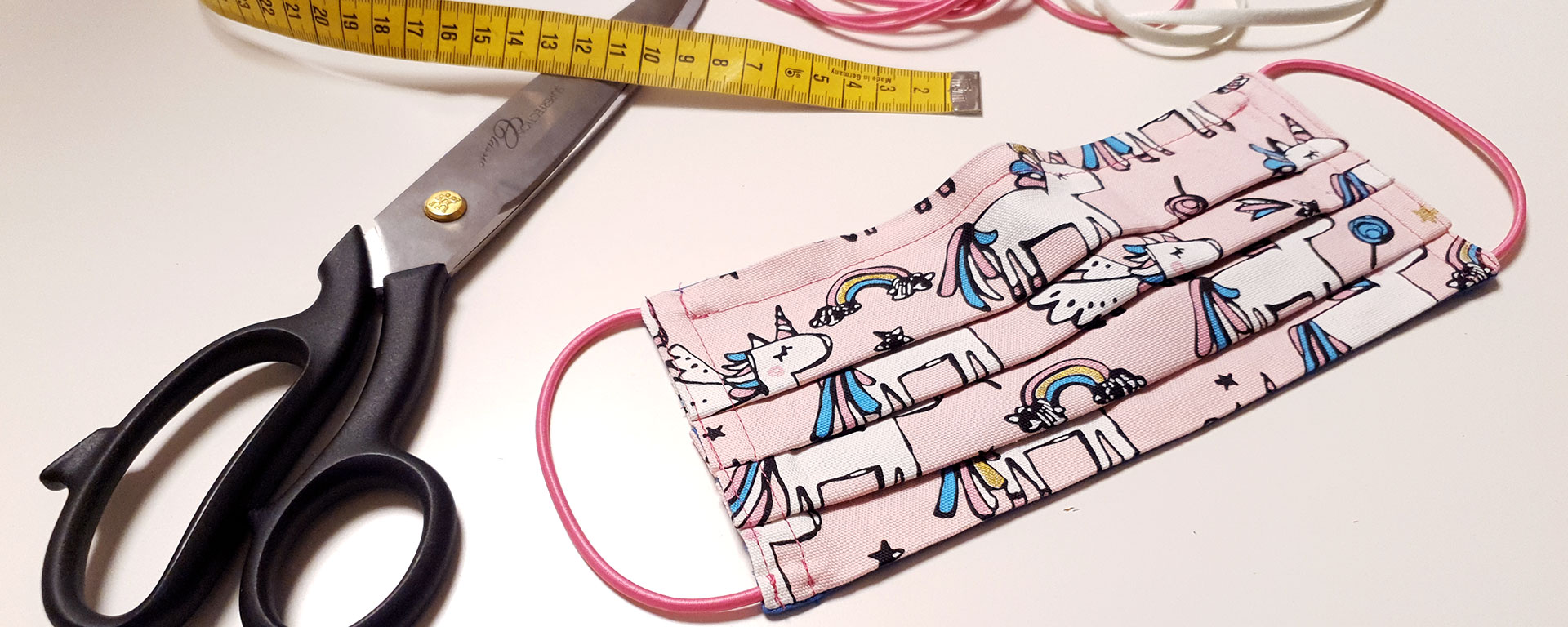
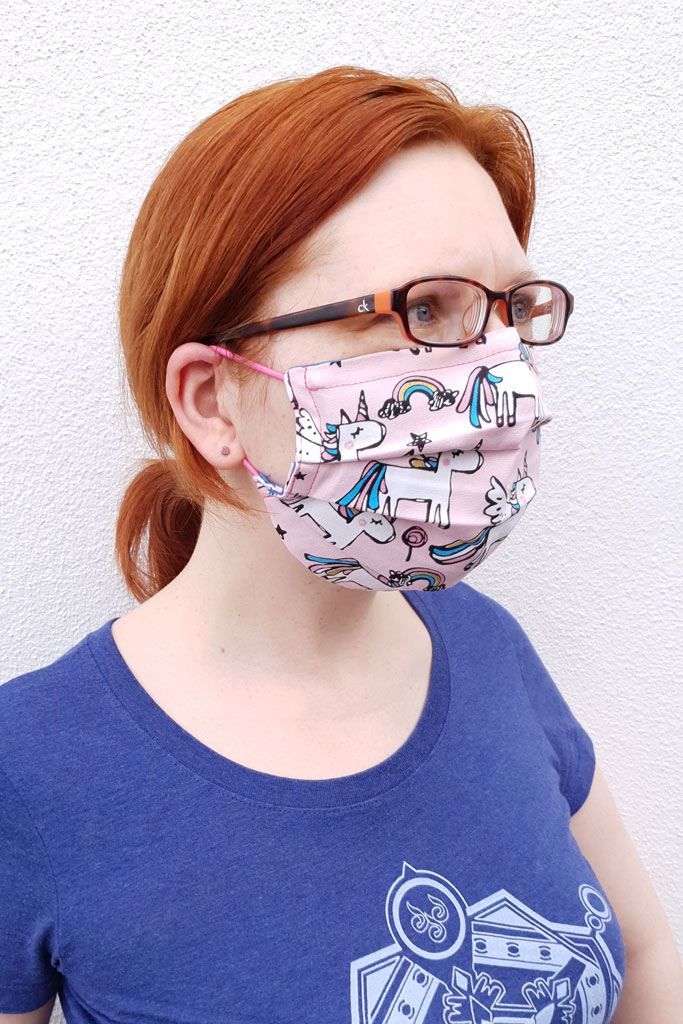
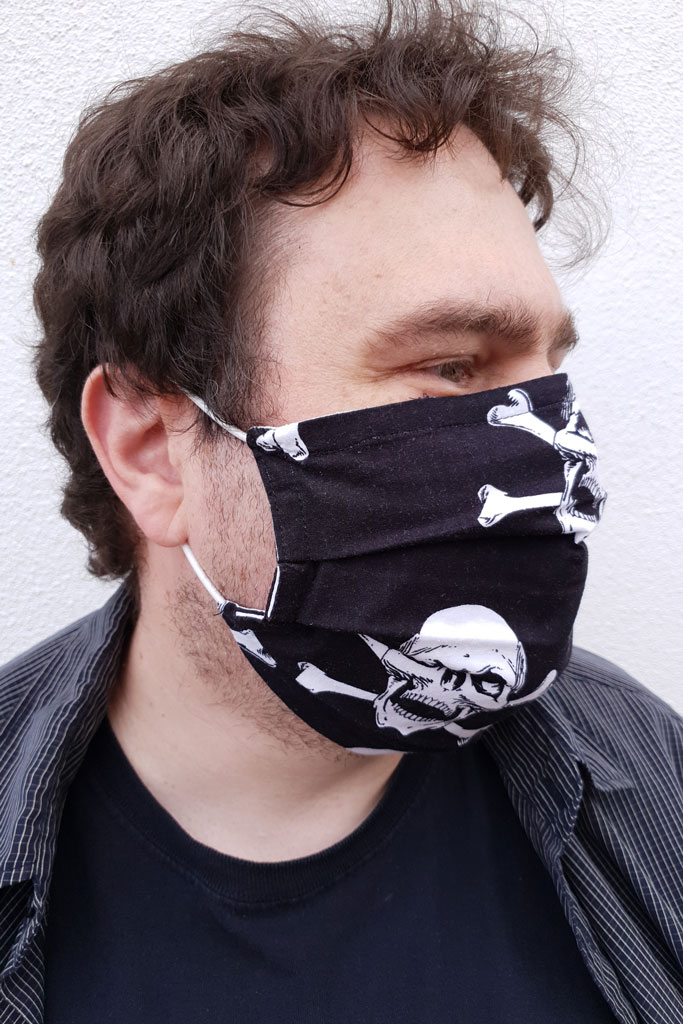

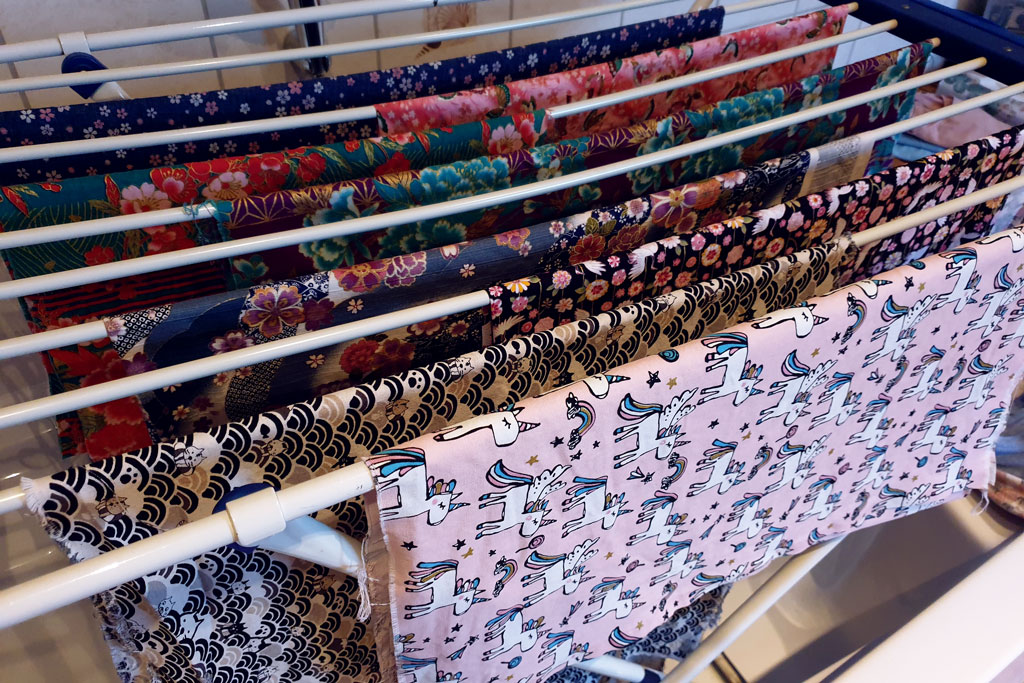
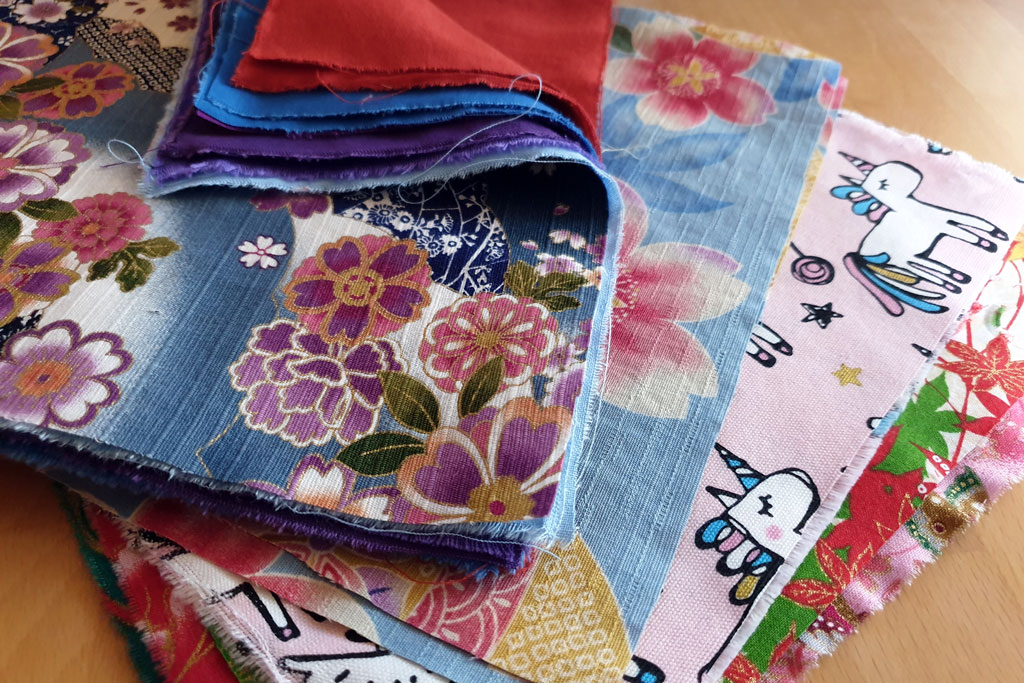
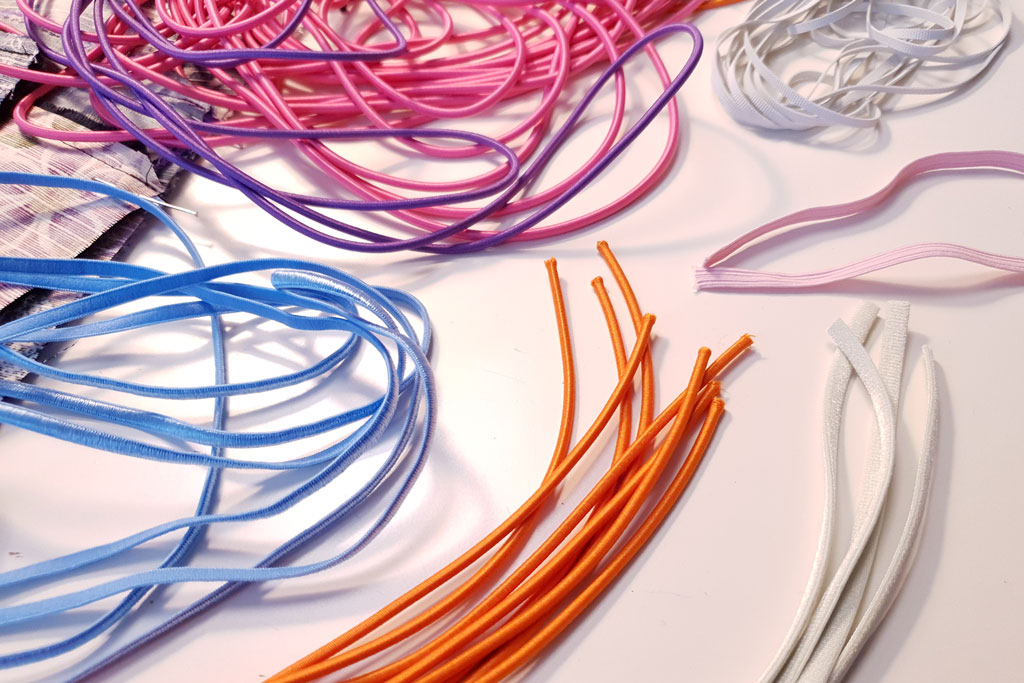
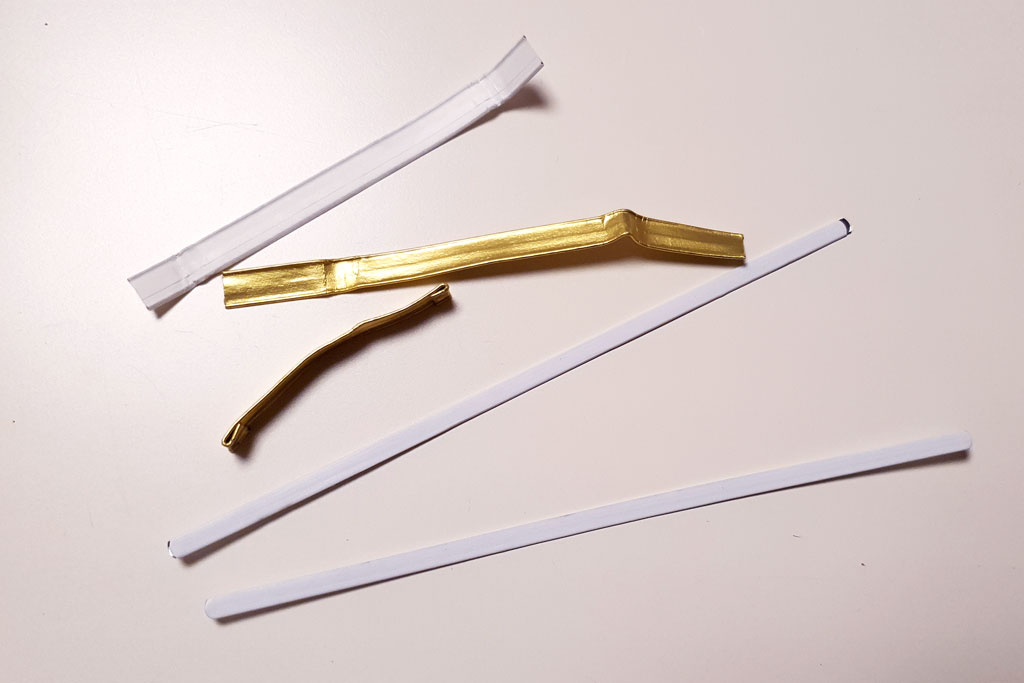
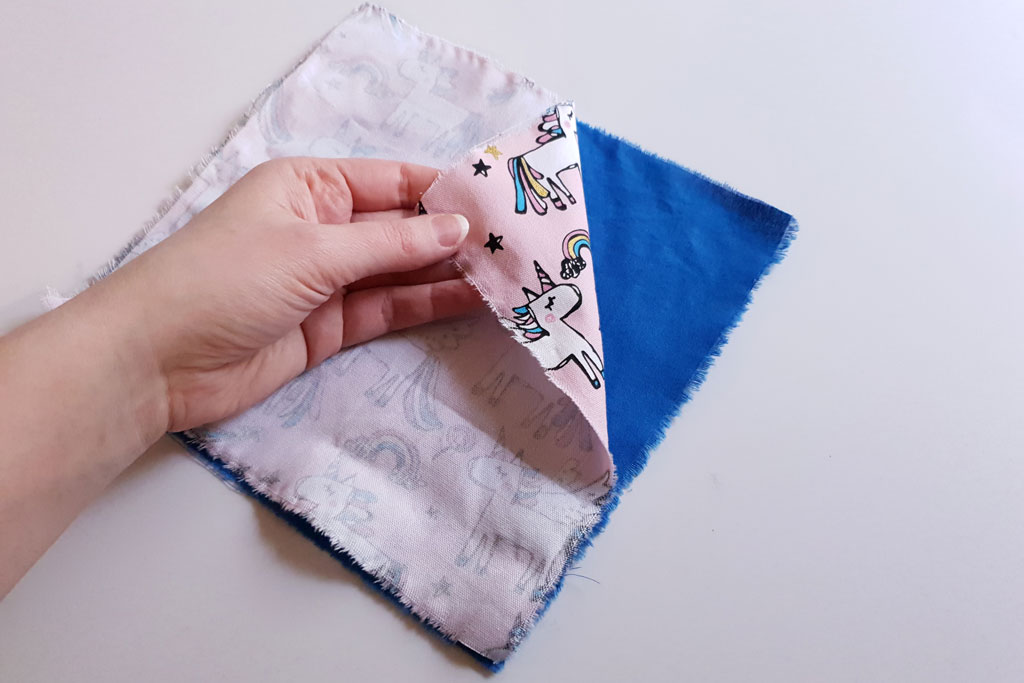
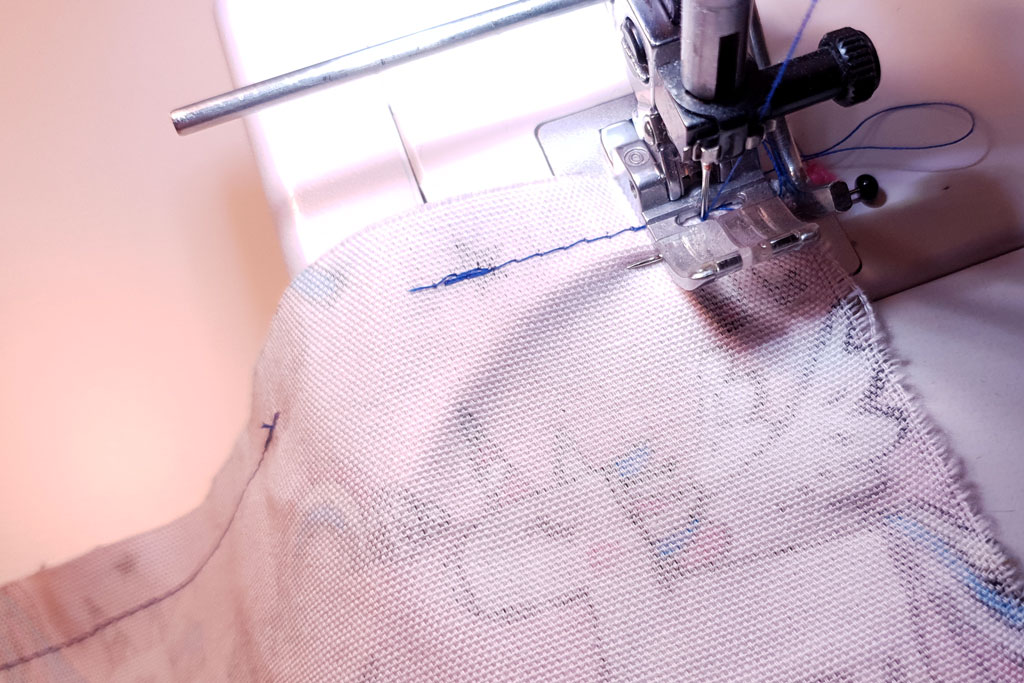
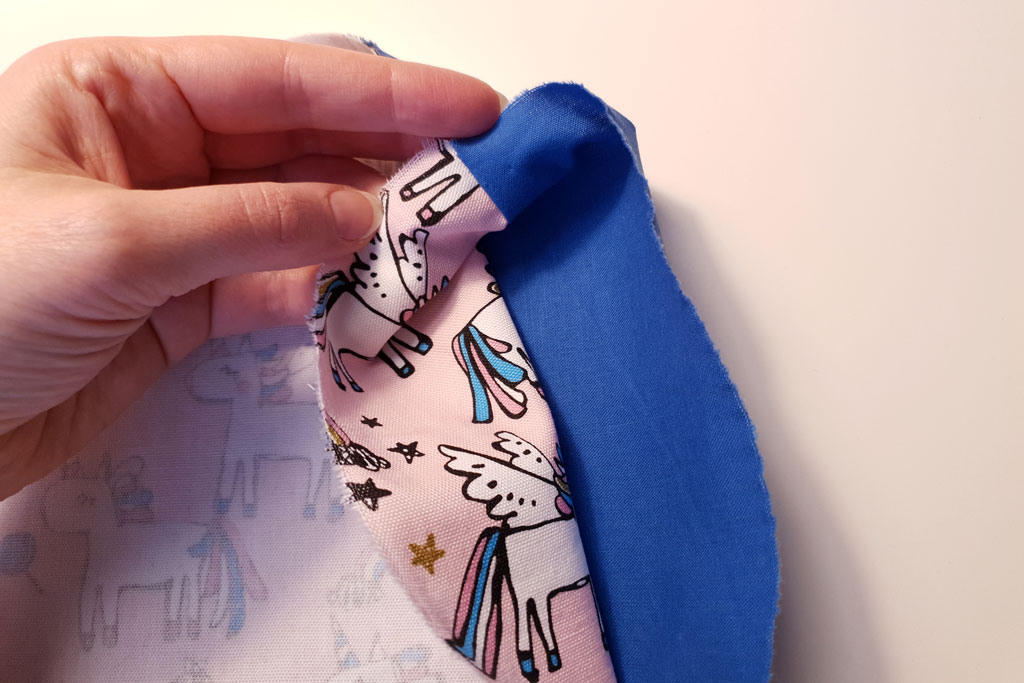

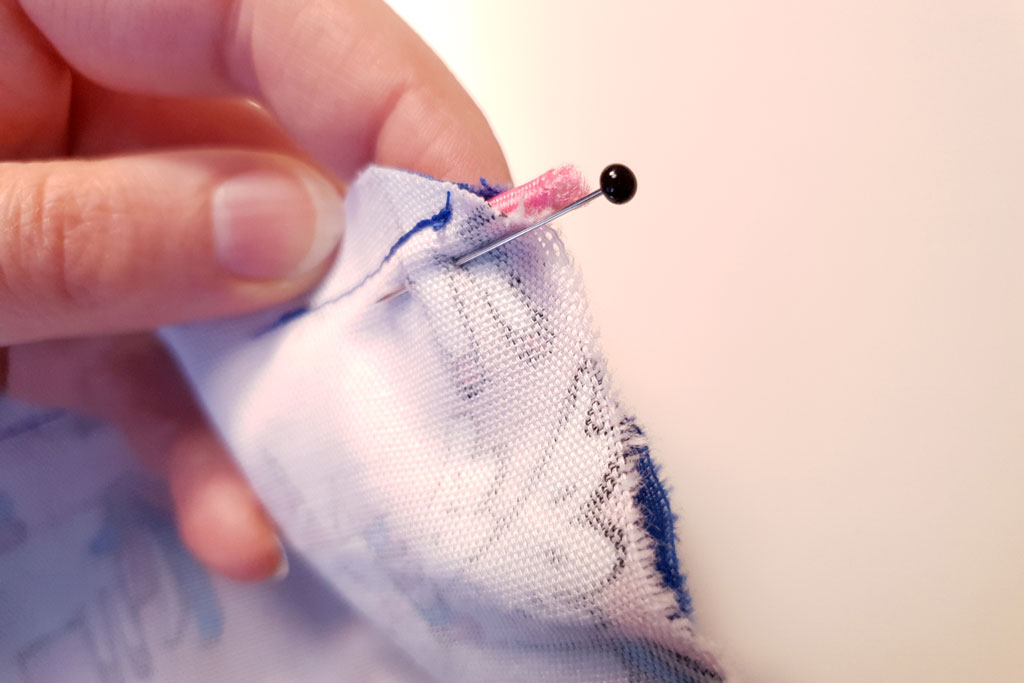
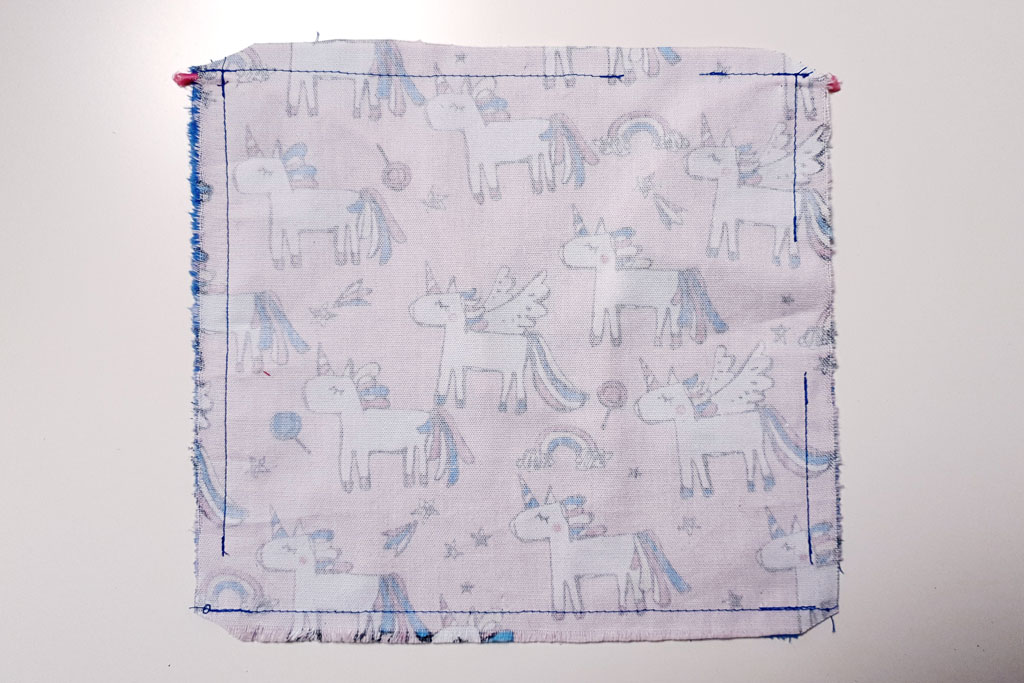
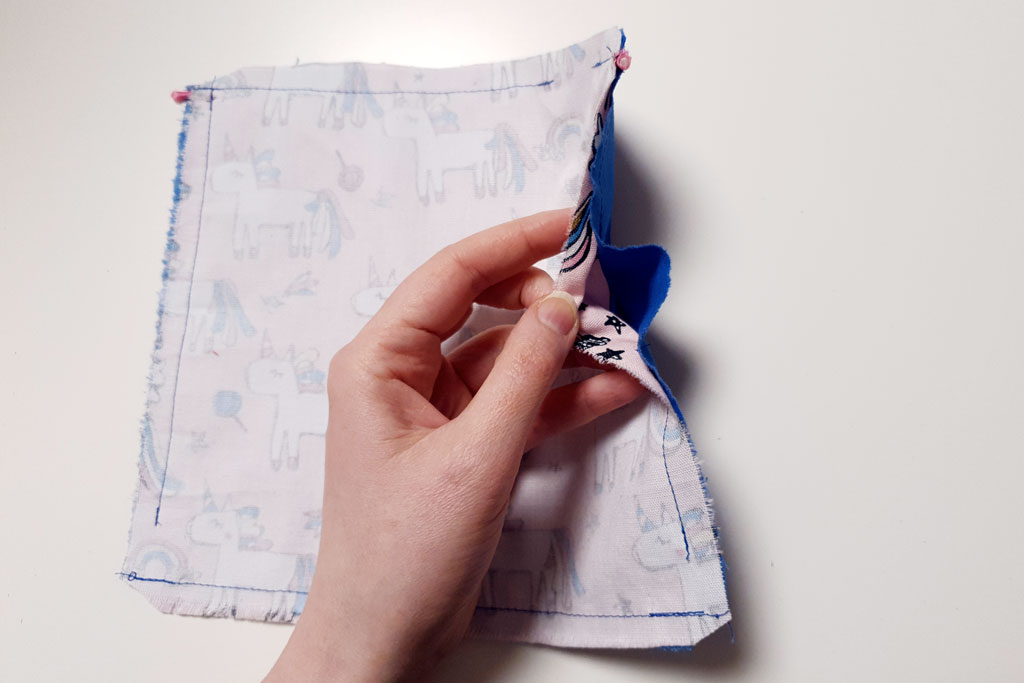
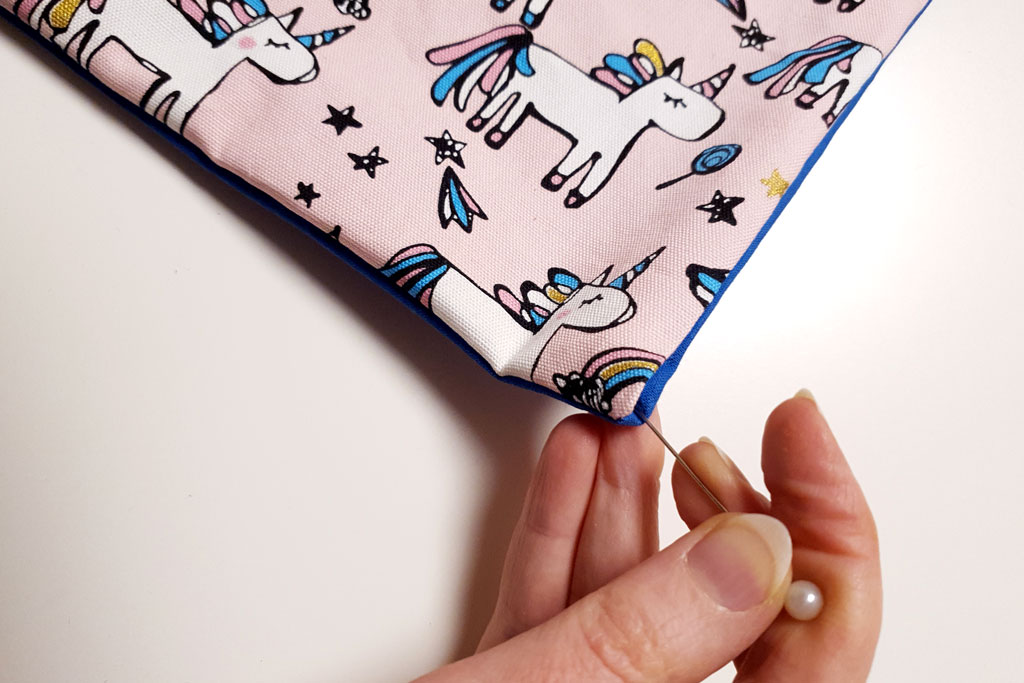
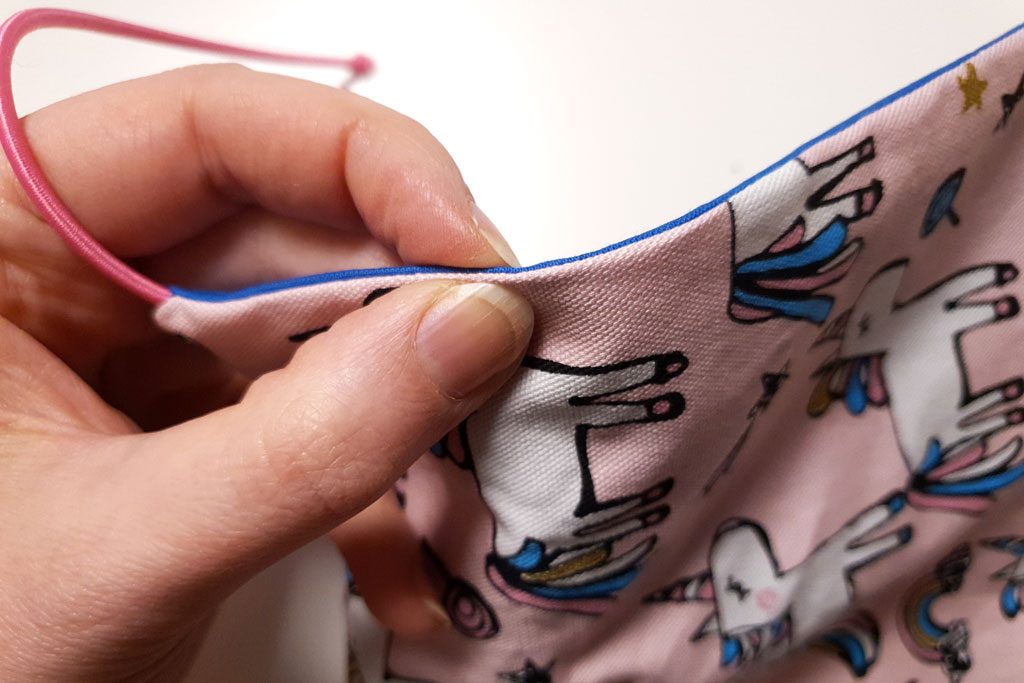
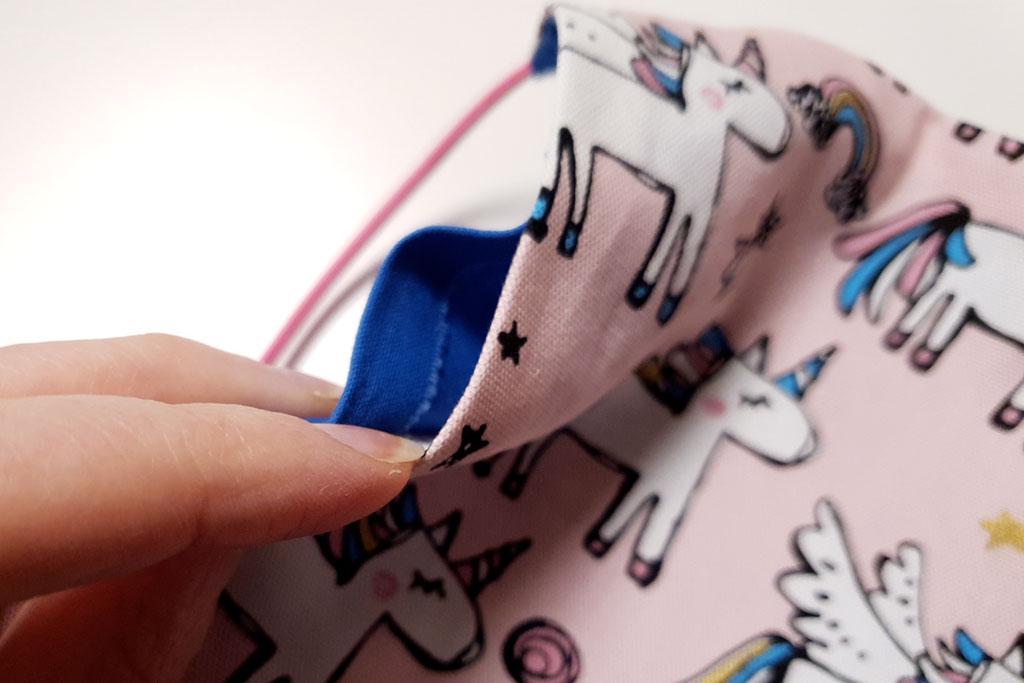
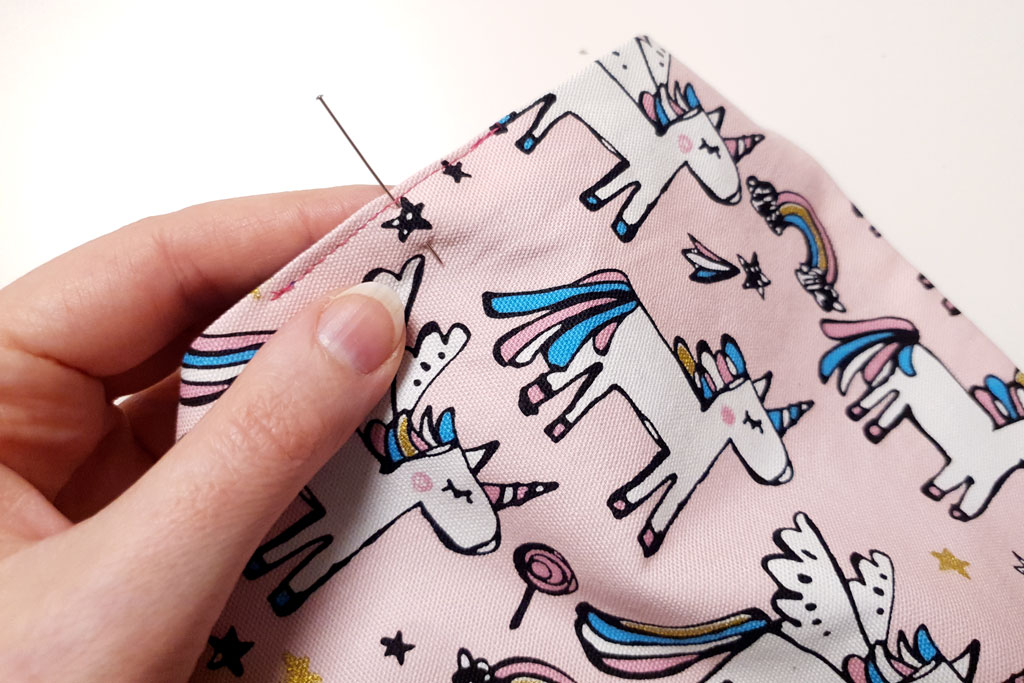
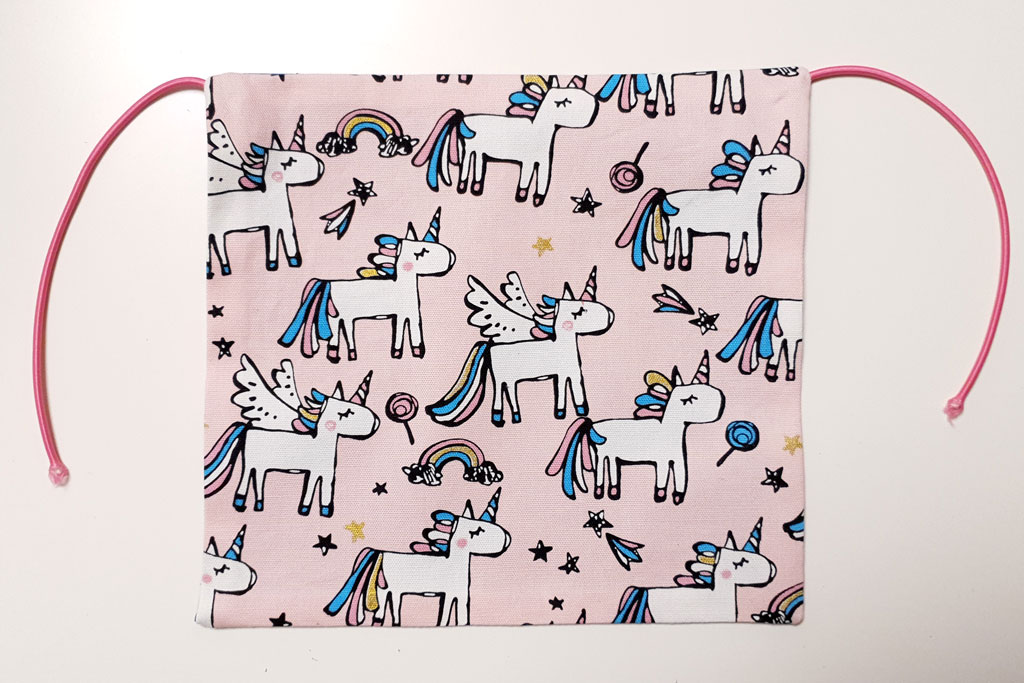
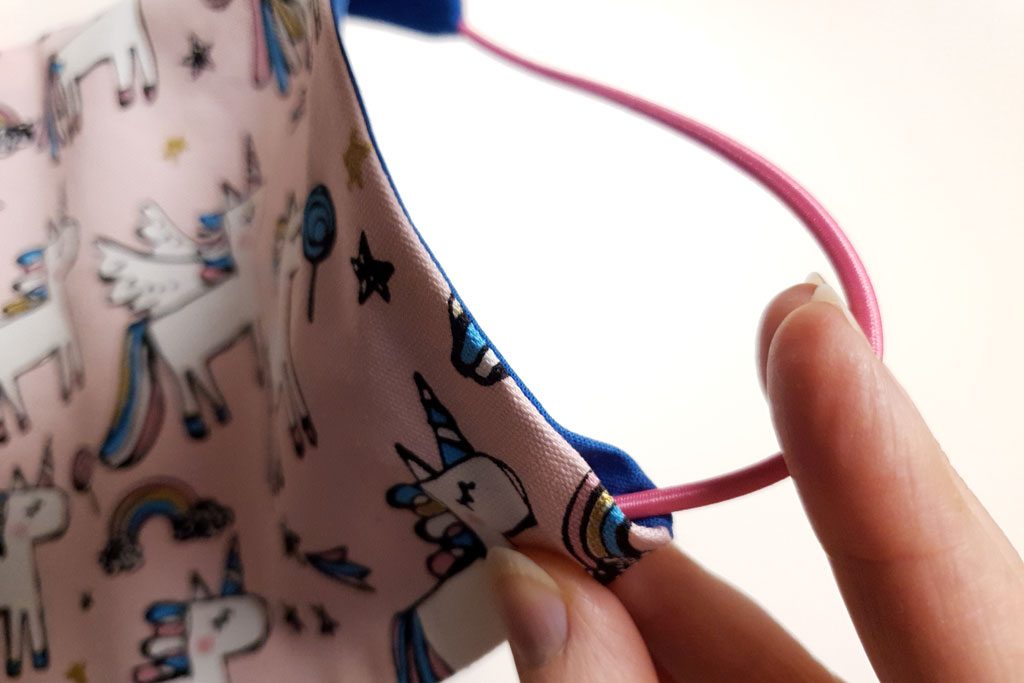
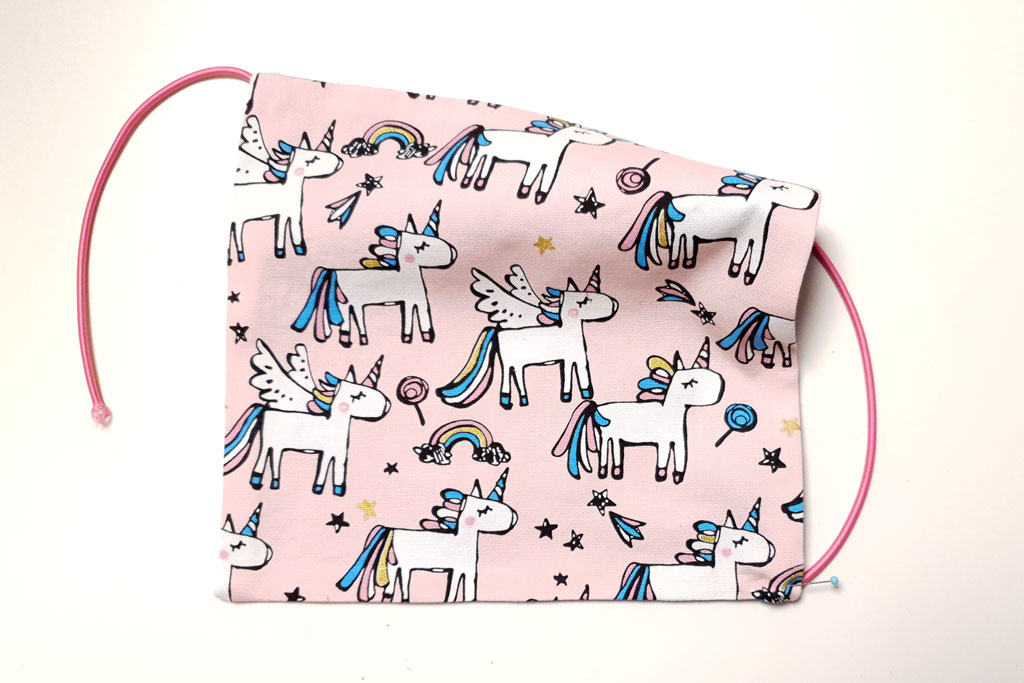
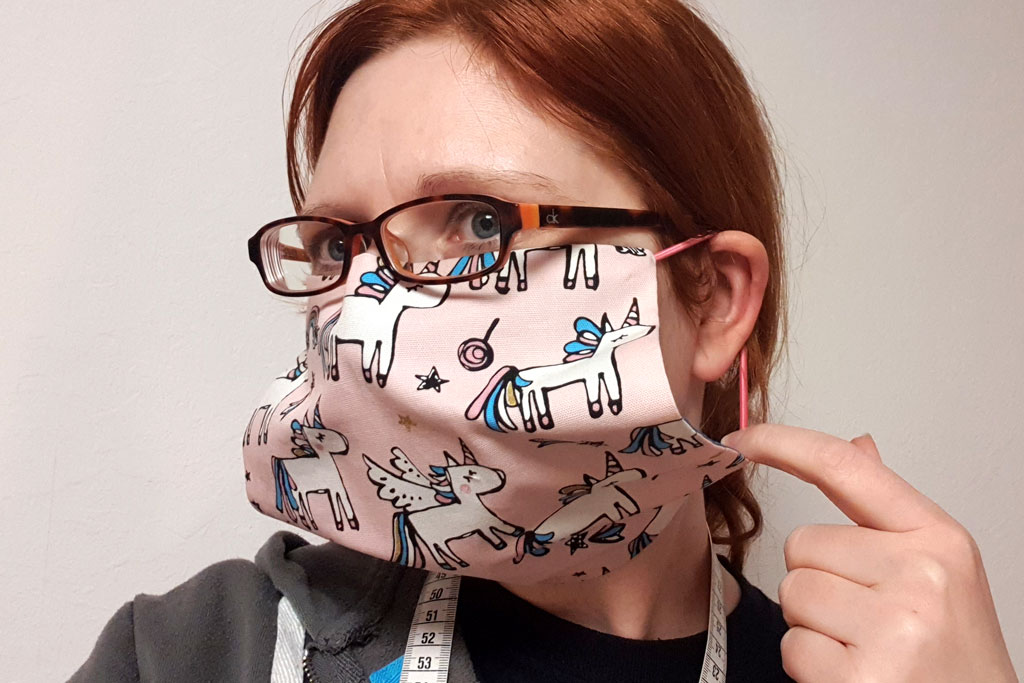
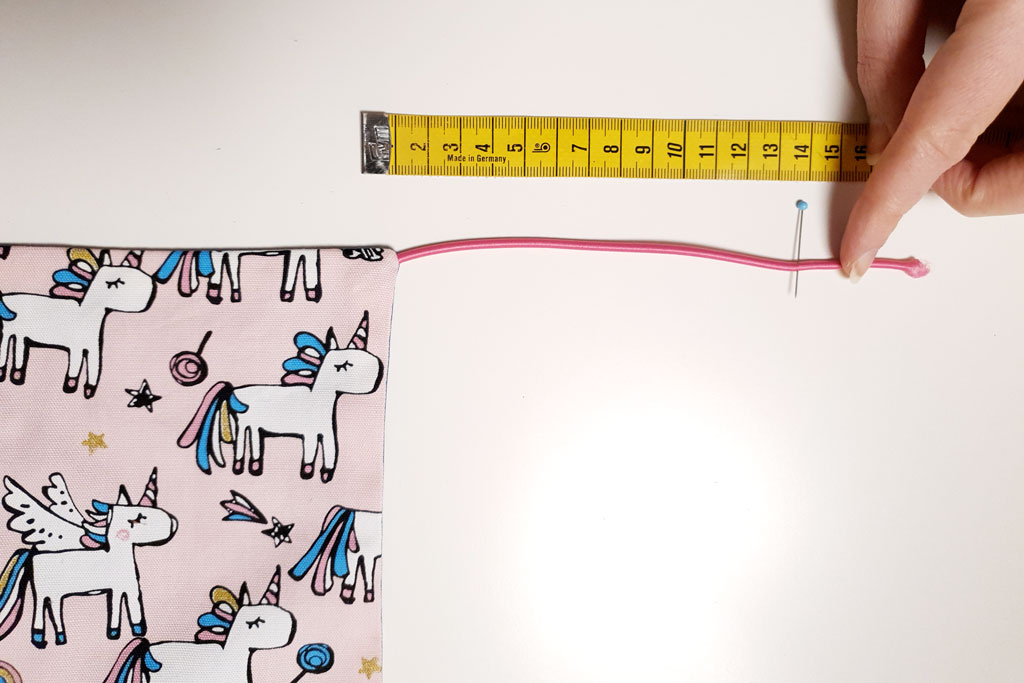
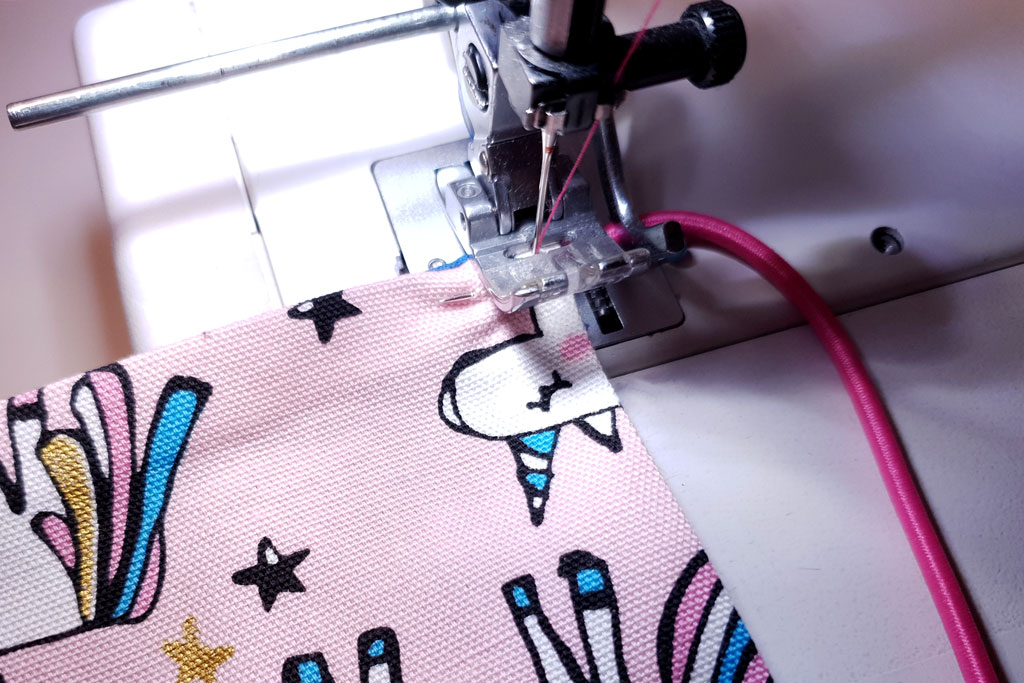
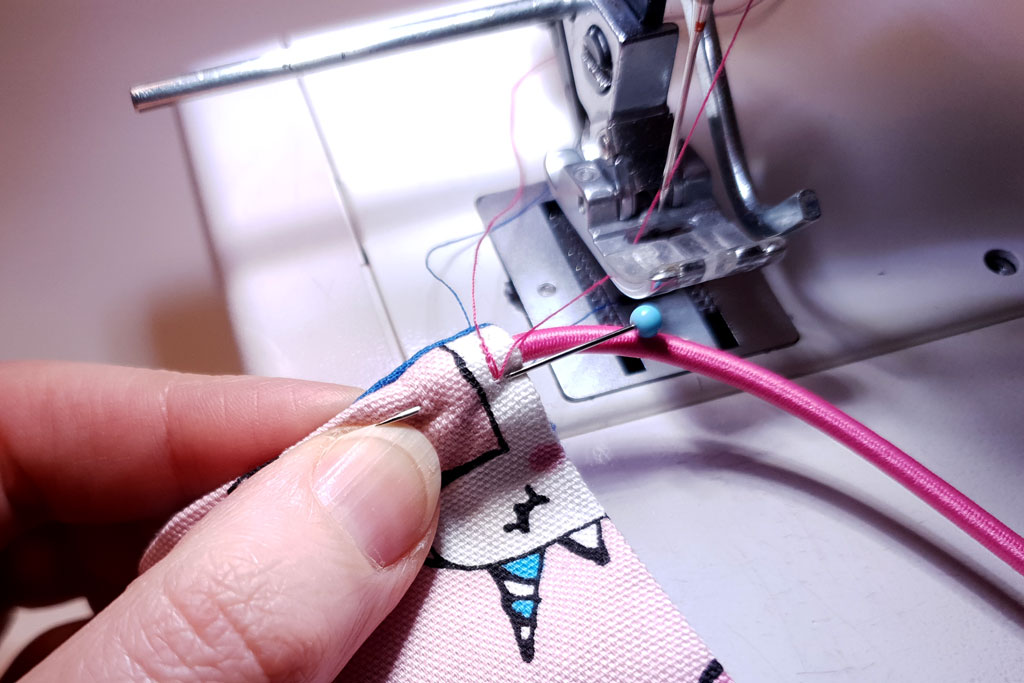
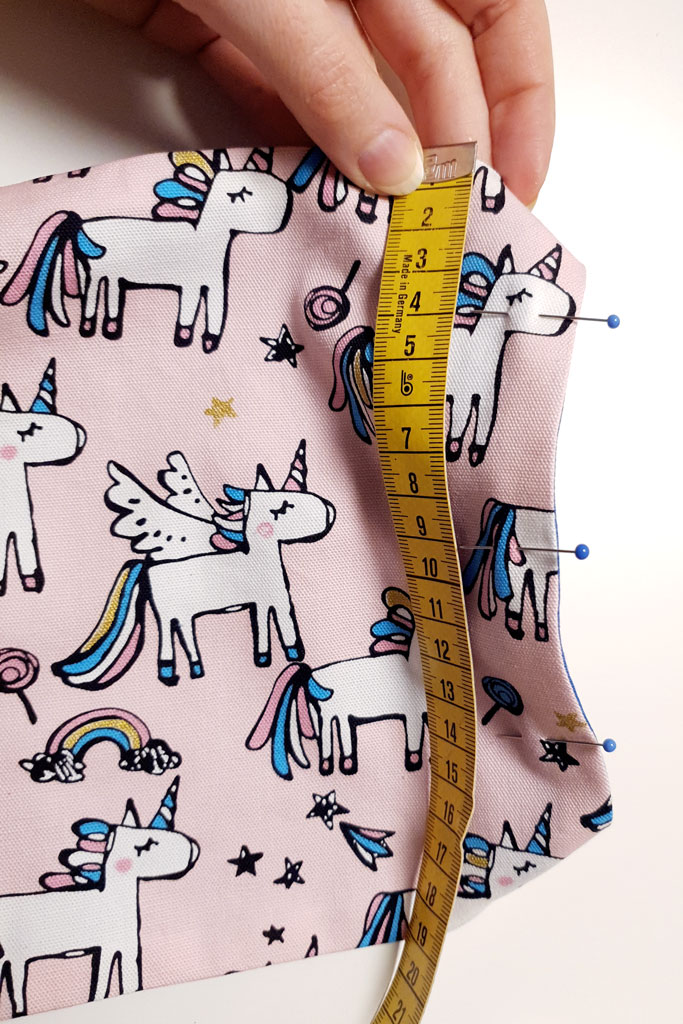
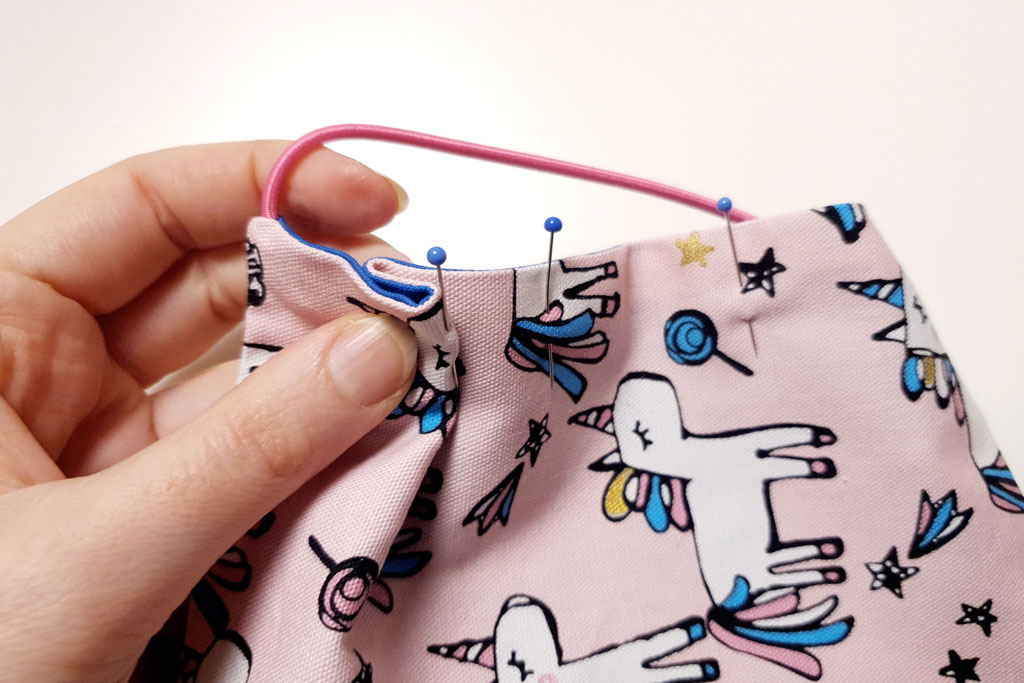
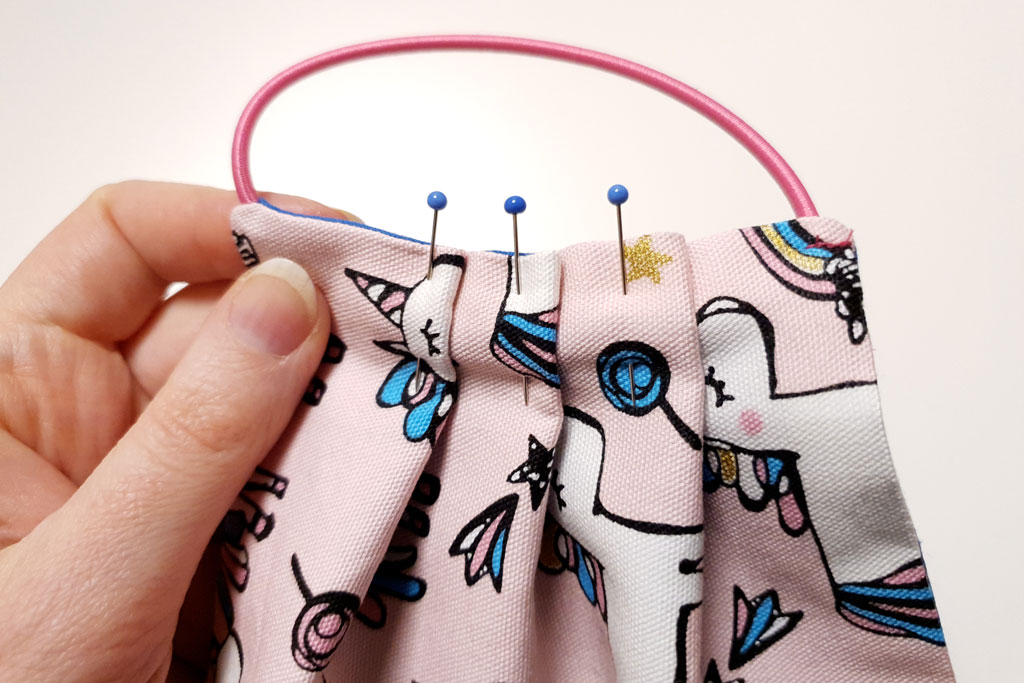
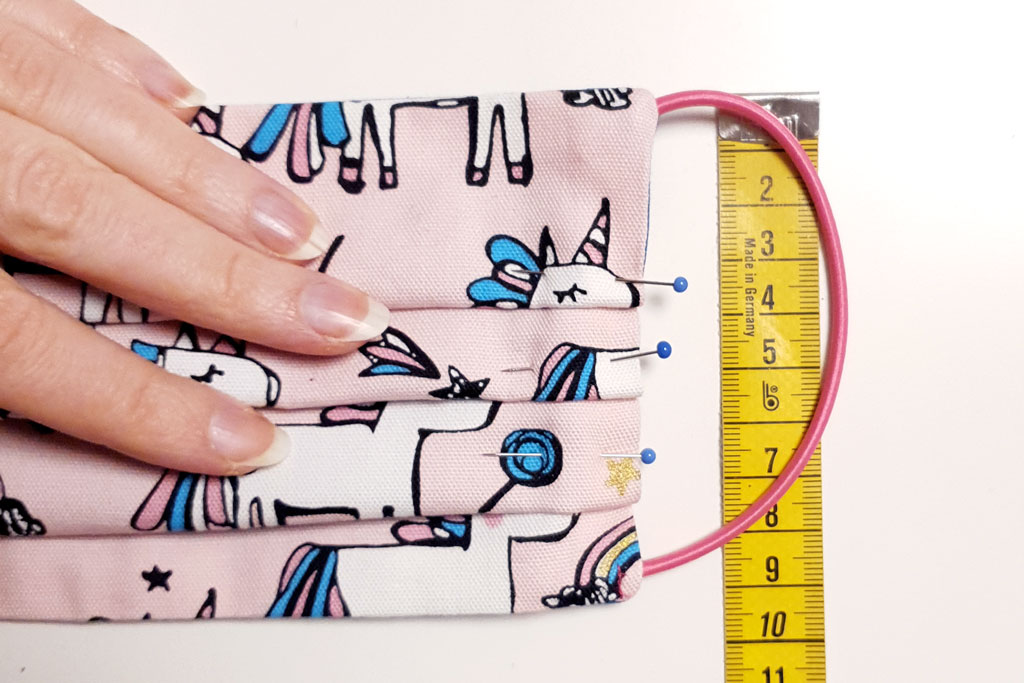
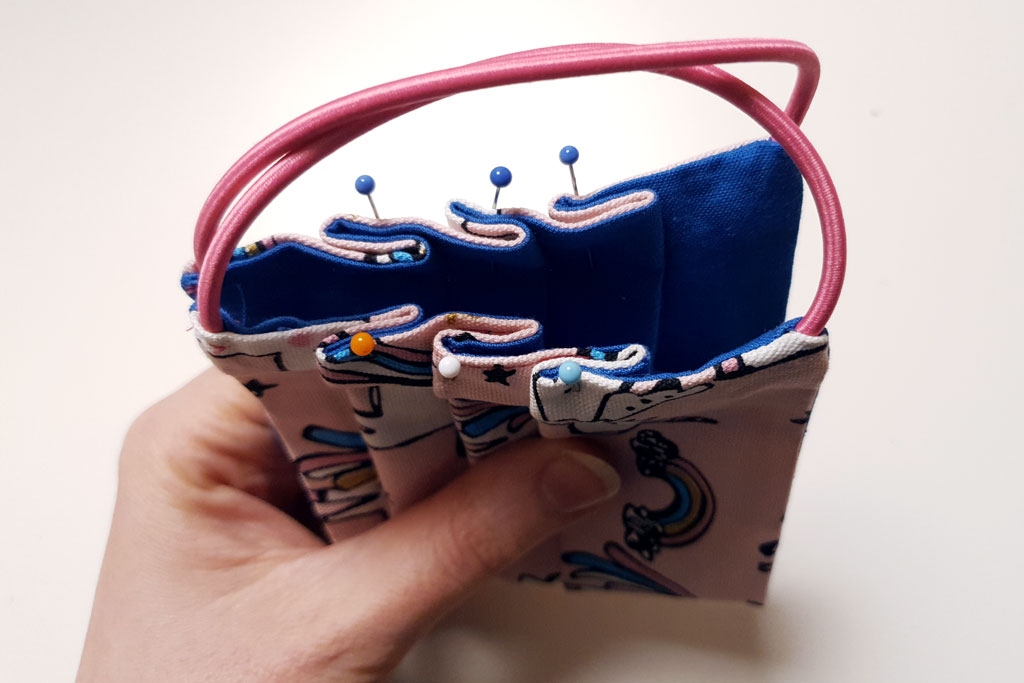
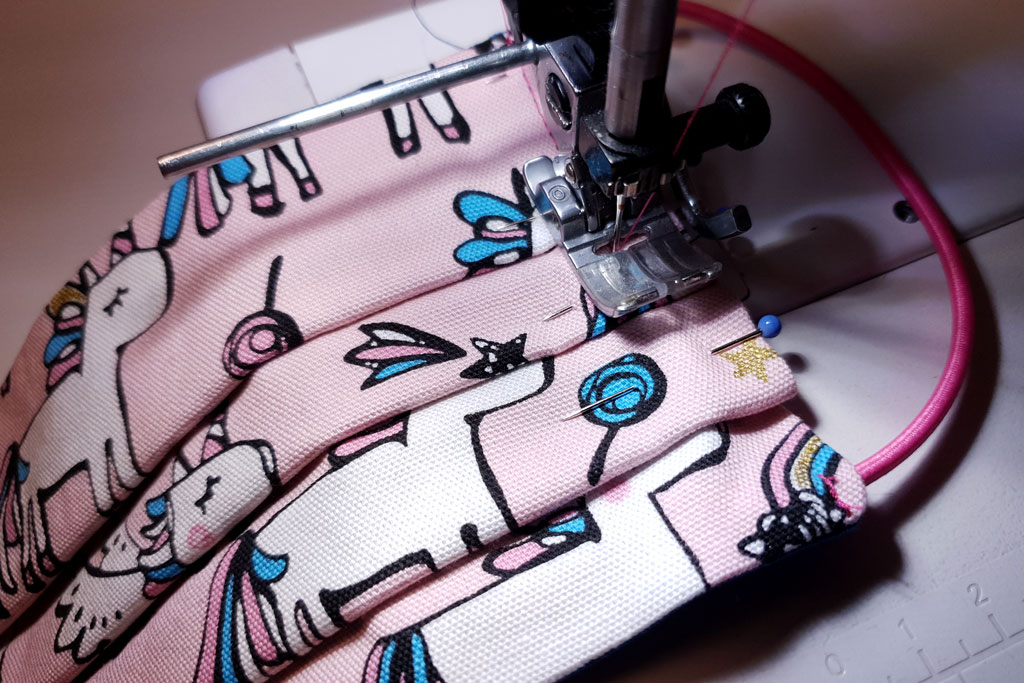
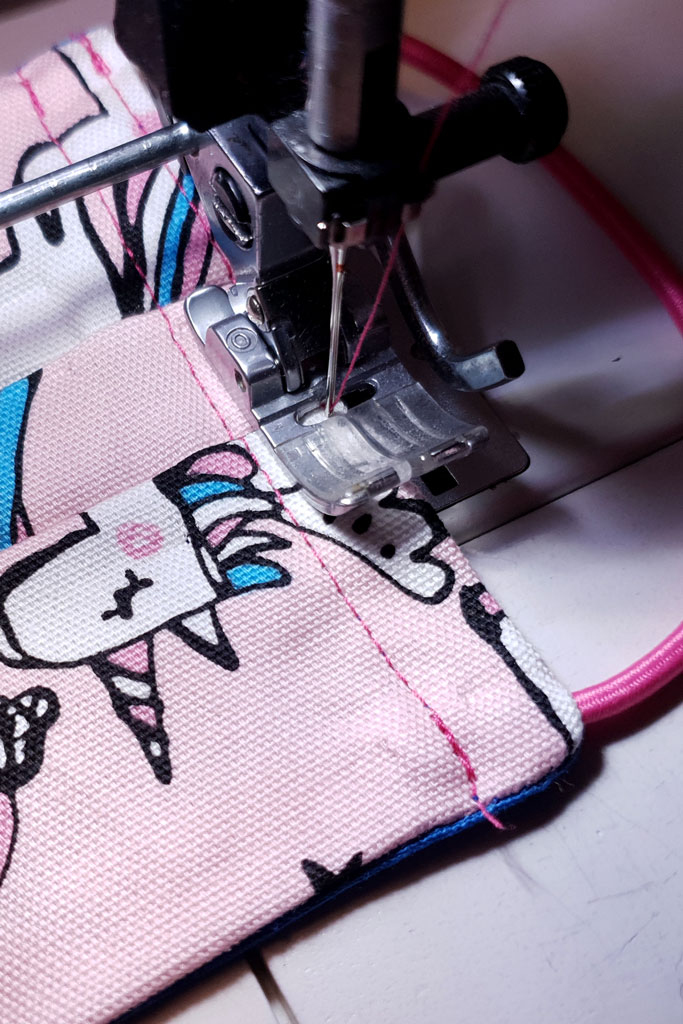
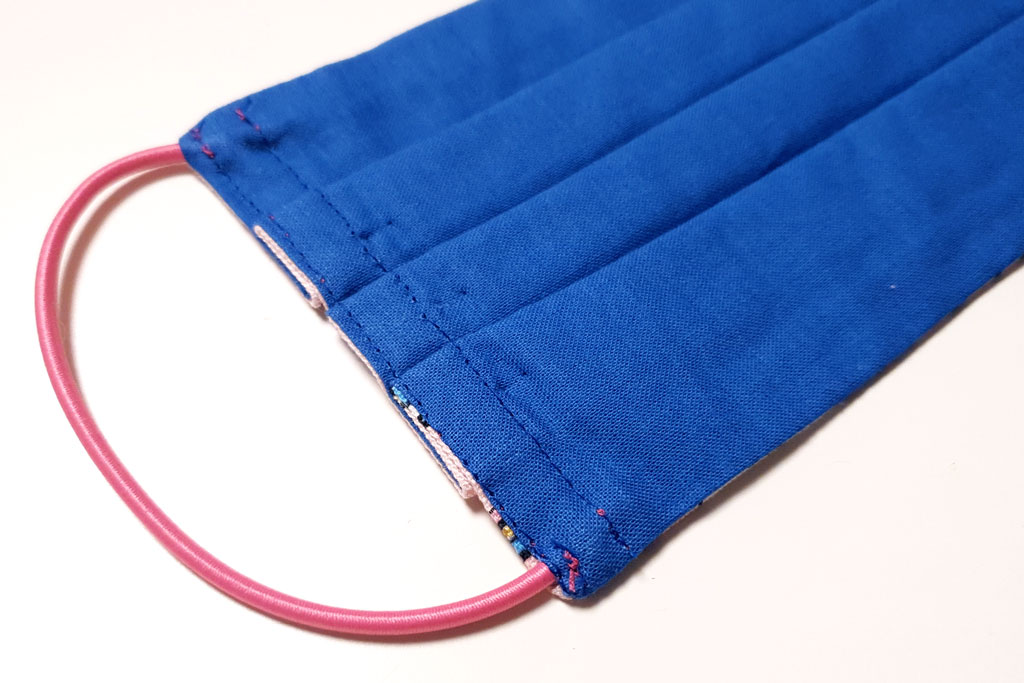
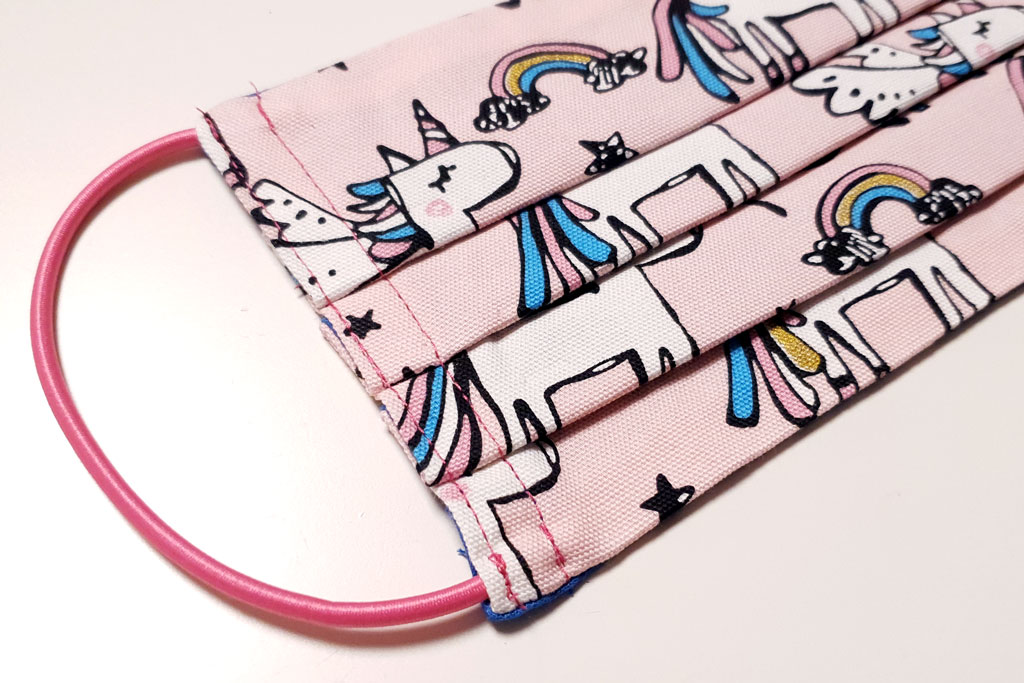
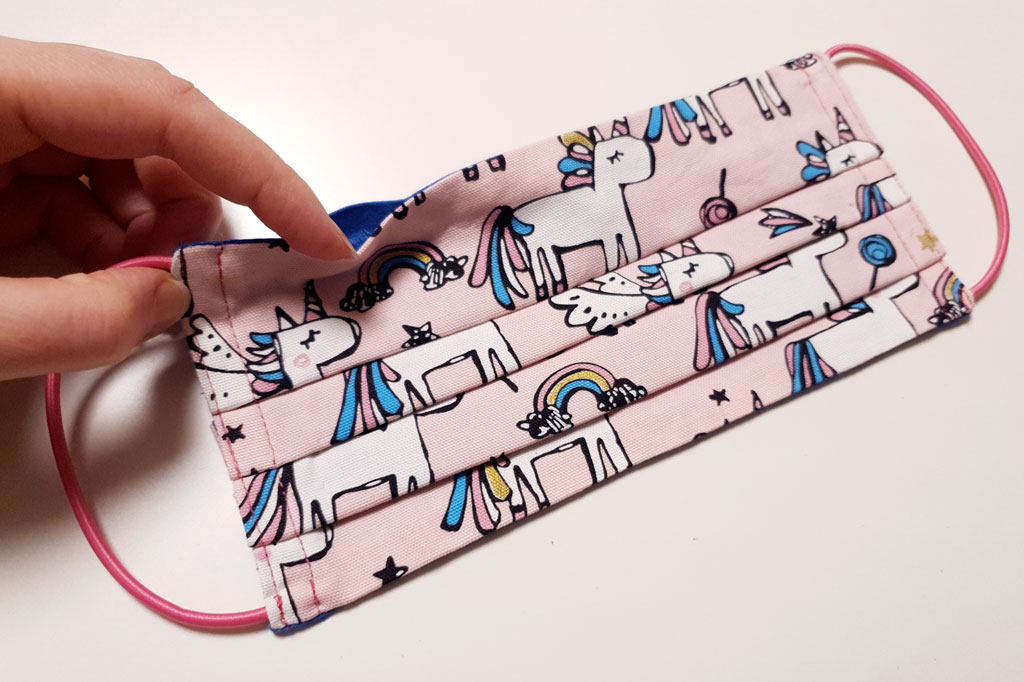
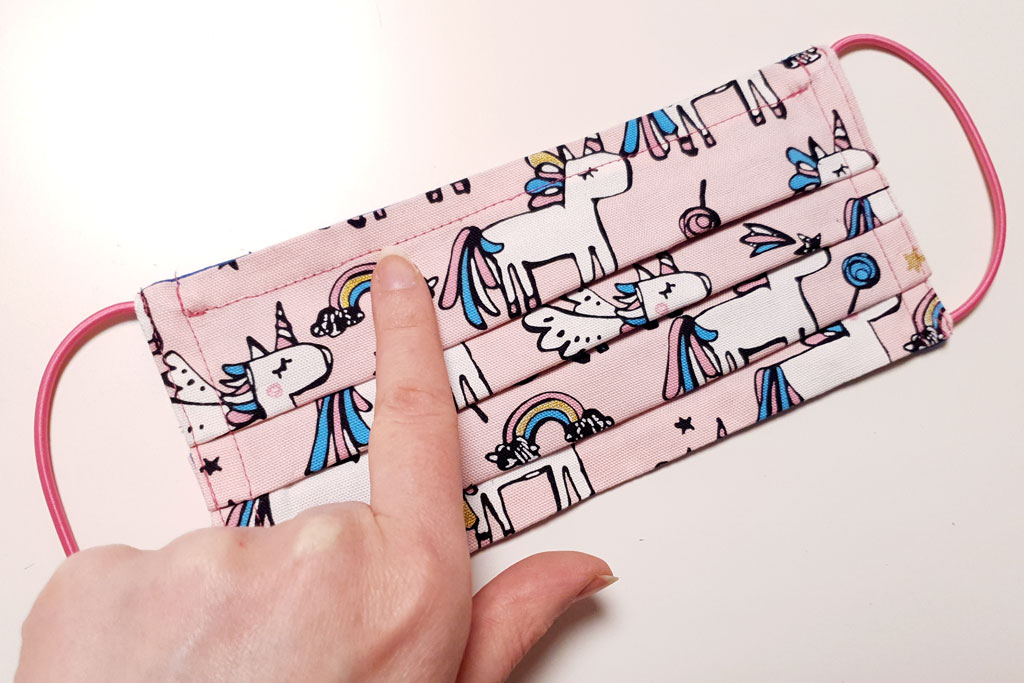
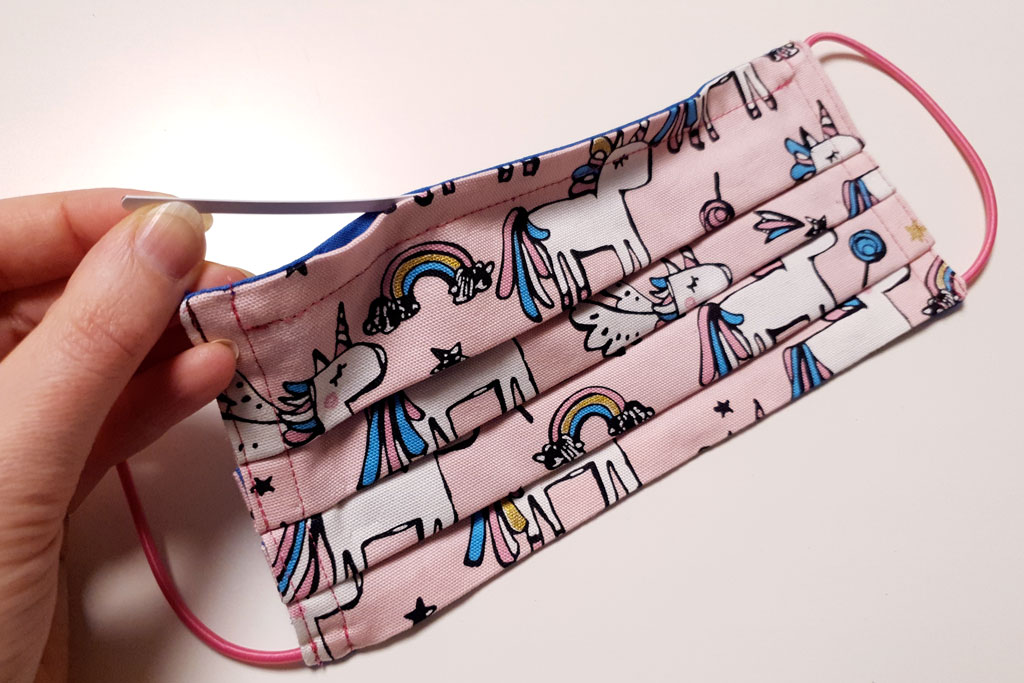
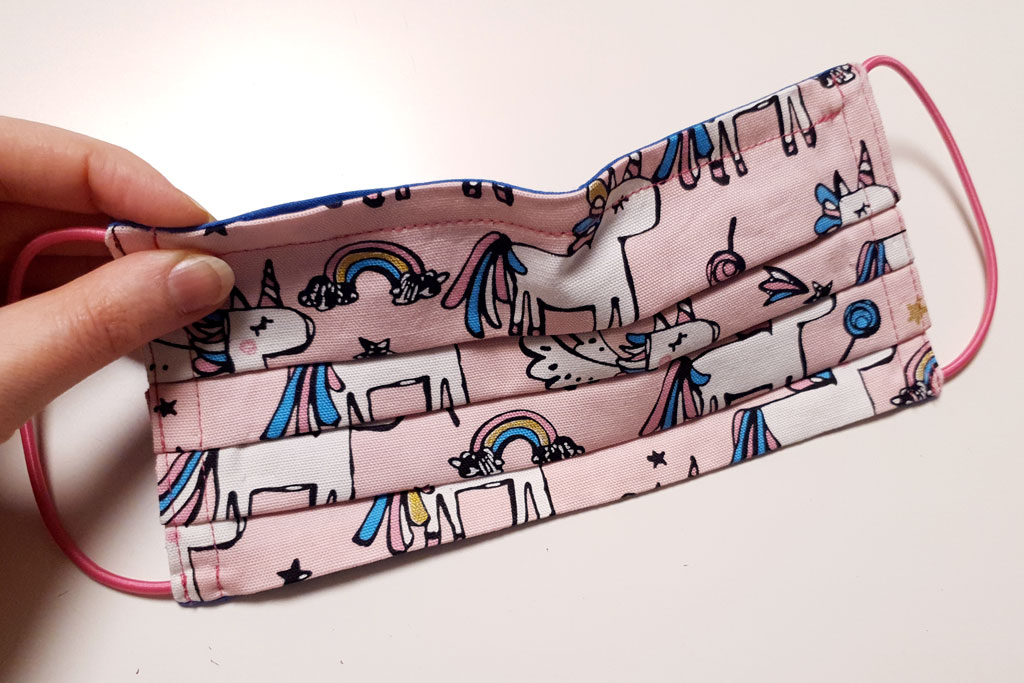
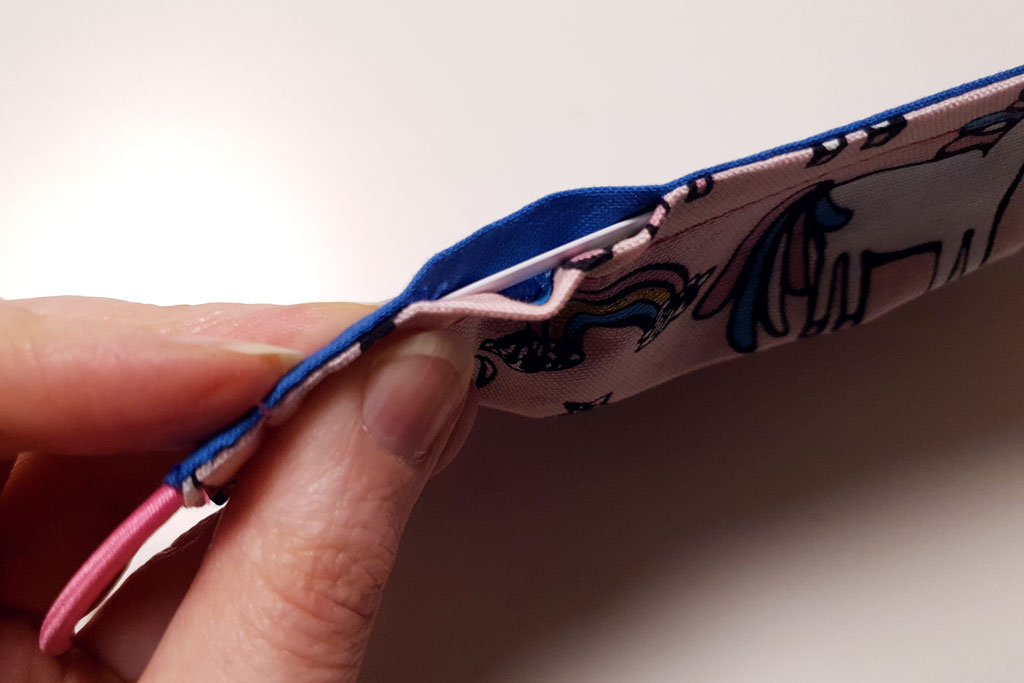
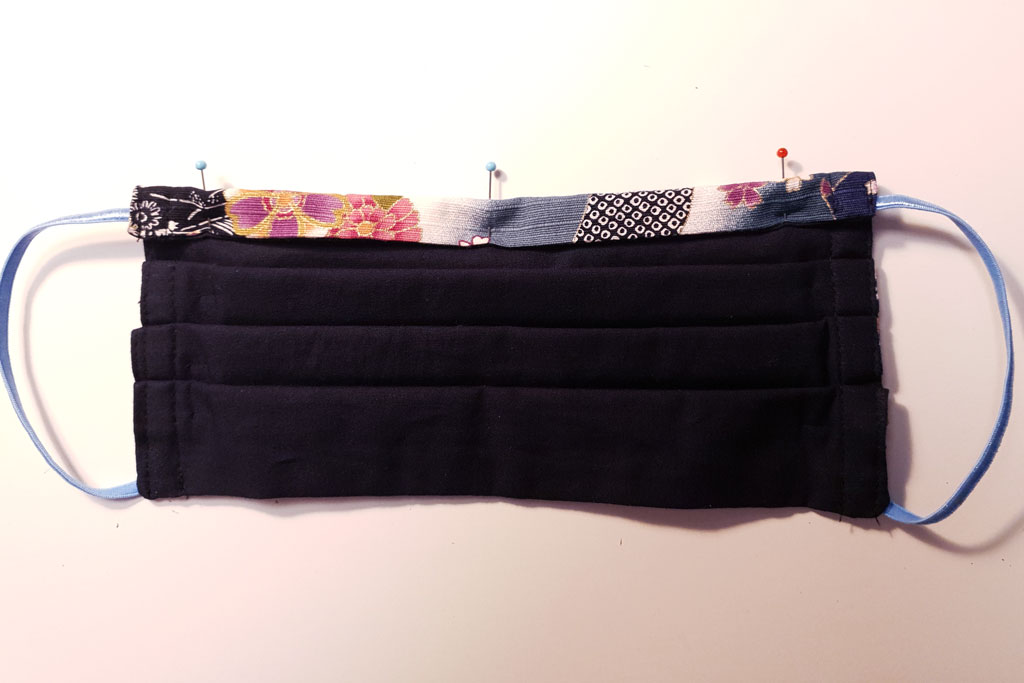
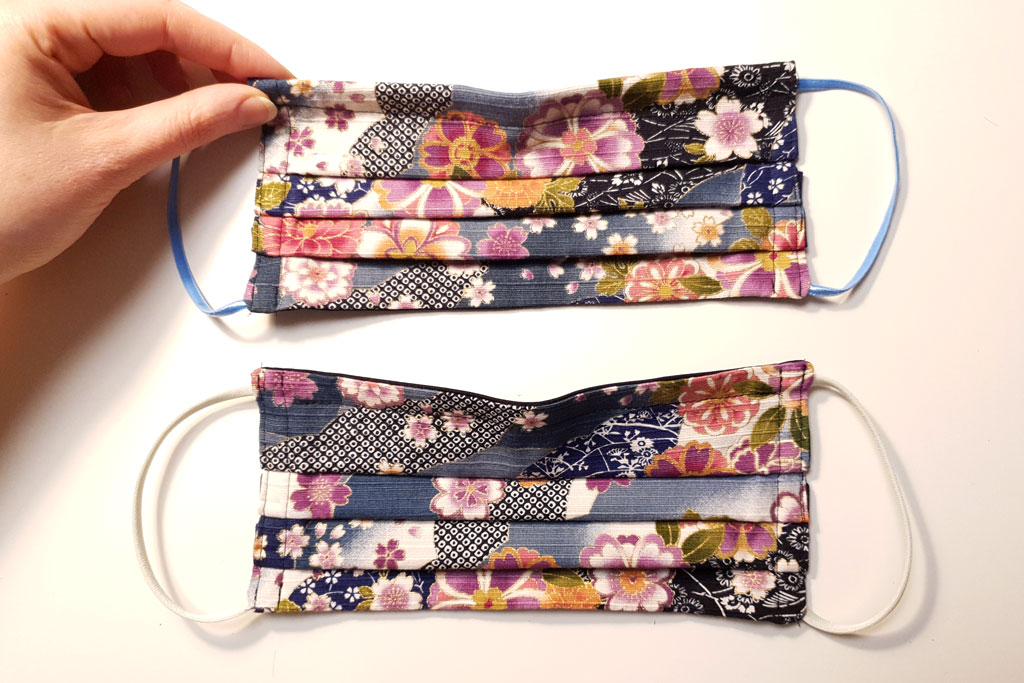
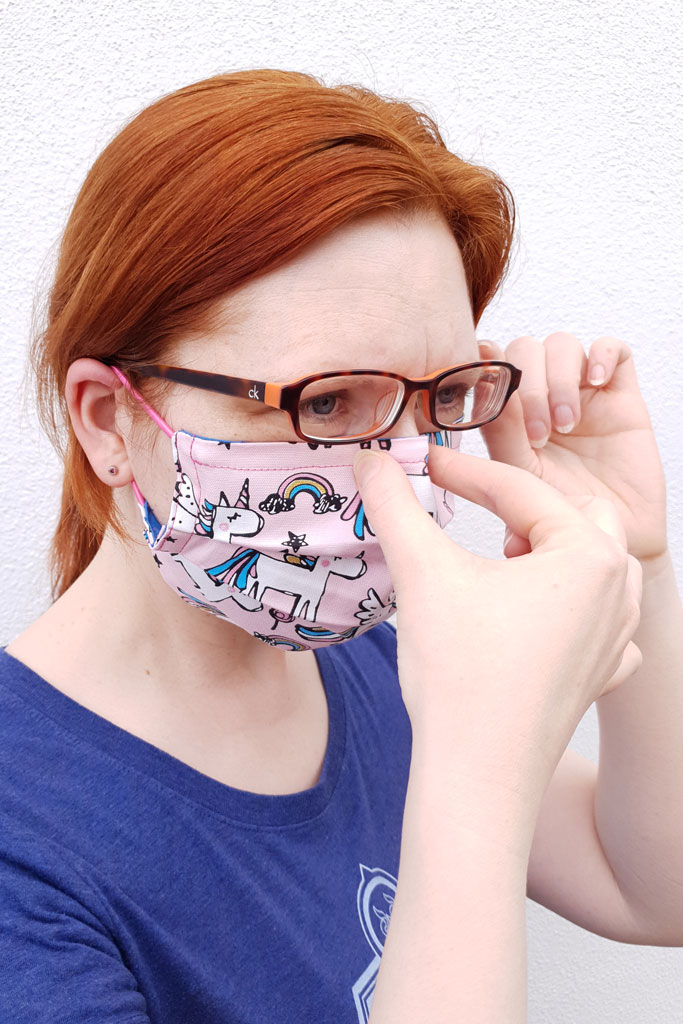
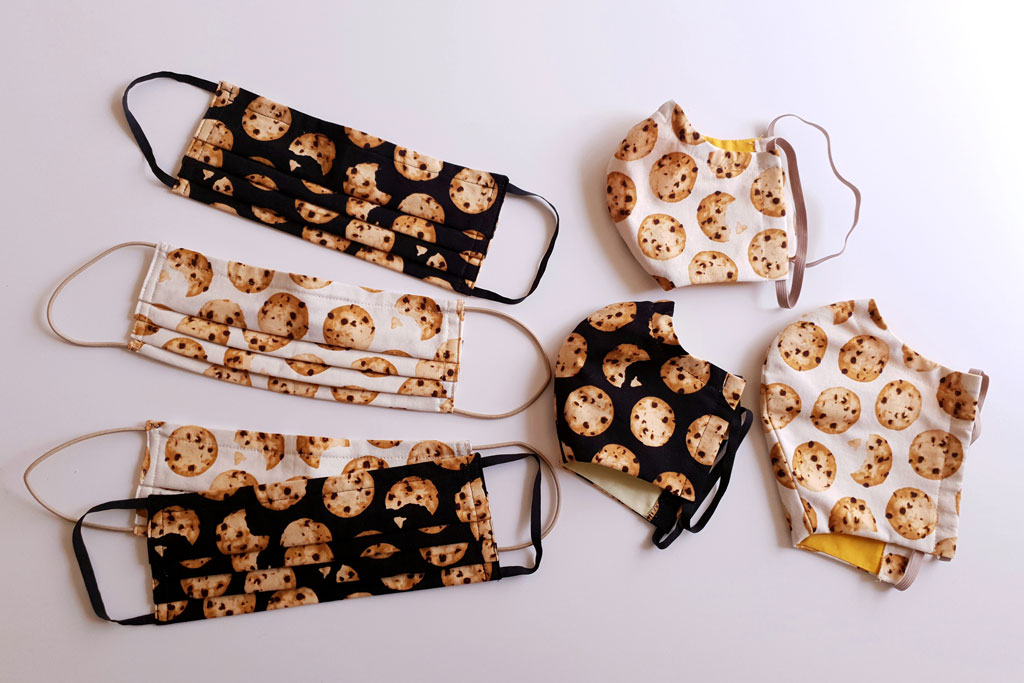
2 Gedanken zu “How to Sew a Simple Face Mask”